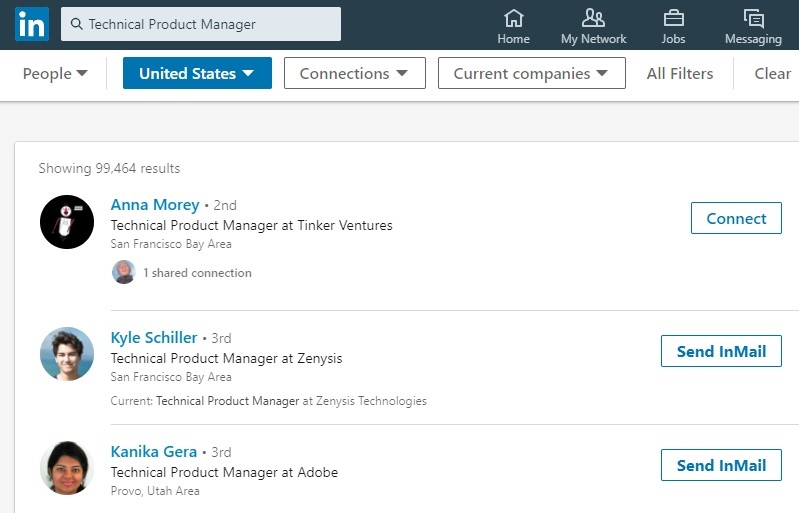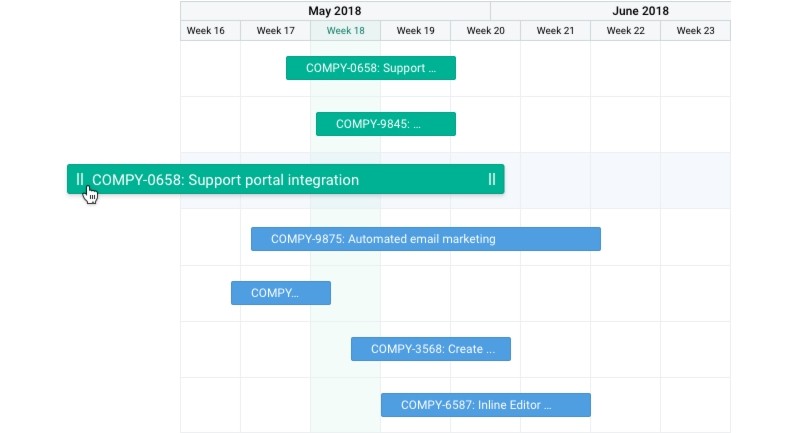5 Differences between Technical Product Manager and Business Oriented PM
Many probably came across different options and interpretations of the role and functionality of the product manager. In large companies and startups today, you can find strategically important employees of various levels related to product management, who are becoming more and more in demand.
The role of a product manager in a company depends on the internal hierarchy and field of activity. Somewhere just one manager is enough, and in some large corporations a whole department can work, in which there is Product VP, product director, product owner, product manager, junior PM or other positions. In technology-oriented companies and in the field of software development, the position of technical product manager is increasingly found. How does it differ from other product roles?

The technical product manager is, first of all, a living person, and not a role. This means that, ideally, such a position should be occupied by a manager with a technical mentality or an appropriate background. Special education is desirable, but often not necessary.
This does not mean at all that technical PM should fulfill technical tasks and always be “on the same wavelength” with the developers. There are no codes in his work. The product manager does not develop the product itself, but manages the product at its various stages of development and coordinates work with software developers to the same extent as with marketers, designers, and sales managers. Optimally, when the technical product manager is focused on all aspects of product management, and not on development issues.
However, technical knowledge will certainly not be redundant. Some technical product managers need to understand and understand well the technical capabilities of not only the product, but the entire company in order to understand how to develop a product strategy in a quality manner .
When you request a technical product manager on a LinkedIn social network, you can see that most of the managers found have a technical education or specialized courses.

By the way, the number of proposed technical managers also indicates the great popularity of this position in companies.

Before describing the differences, let us pay attention to the general points that unite the product manager and technical product manager: Both managers are responsible for the following:
Now let's identify the key differences.
Like any manager today, technical PM needs certain online services and tools that help in the work.
One of the main tools in the “clip” of the product manager is the roadmap or product roadmap. This is a strategic document in which they can plan product goals, capture ideas, short-term and long-term initiatives.
One of the first large companies to use the roadmap development plan was Motorola in the 1970s. From that moment, more and more companies began to turn to this convenient visualization tool.
A technology roadmap (sometimes a technical one) or a technology roadmap is sometimes called an IT roadmap. This roadmap provides key information that helps IT professionals make better decisions regarding product technology. A feature of the technical roadmap is that it is designed for developers.
You can even maintain a simple roadmap using MS Excel. However, complex IT projects and strategies require a careful approach and the use of special services with convenient functionality, such as Hygger, Aha, Asana, Trello, etc. The development roadmap helps the development teams and product manager determine which technologies should be applied and when. also visualizes a schedule for introducing new features.
Using technology roadmap is, among other things, a way to organize the work of a team. In companies engaged in software development, the key goal of roadmaps is to coordinate all engineering, IT, marketing and other issues by developing a common plan of action using new solutions.
Technological roadmaps can differ in goals, strategies, and team members:
developers roadmaps, internal IT roadmaps, architecture roadmap, software roadmap, hardware procurement roadmap, and others.
Most often, technology roadmap includes:
For any roadmap, the ability to share it is very important. This feature is offered by the Hygger.io product management platform .


Today you can meet companies in which a business-oriented product manager and technical product manager are actively working. But most companies still need one product manager.
Another important point is that the names do not always accurately reflect what people do. Perhaps you have all the prerequisites in order to become a technical product manager. In any case, regardless of the names and roles, product managers must have all the professional skills necessary to complete all stages of product management and be able to correctly use the technological roadmap.
The role of a product manager in a company depends on the internal hierarchy and field of activity. Somewhere just one manager is enough, and in some large corporations a whole department can work, in which there is Product VP, product director, product owner, product manager, junior PM or other positions. In technology-oriented companies and in the field of software development, the position of technical product manager is increasingly found. How does it differ from other product roles?

Product Technical Manager
The technical product manager is, first of all, a living person, and not a role. This means that, ideally, such a position should be occupied by a manager with a technical mentality or an appropriate background. Special education is desirable, but often not necessary.
This does not mean at all that technical PM should fulfill technical tasks and always be “on the same wavelength” with the developers. There are no codes in his work. The product manager does not develop the product itself, but manages the product at its various stages of development and coordinates work with software developers to the same extent as with marketers, designers, and sales managers. Optimally, when the technical product manager is focused on all aspects of product management, and not on development issues.
However, technical knowledge will certainly not be redundant. Some technical product managers need to understand and understand well the technical capabilities of not only the product, but the entire company in order to understand how to develop a product strategy in a quality manner .
When you request a technical product manager on a LinkedIn social network, you can see that most of the managers found have a technical education or specialized courses.

By the way, the number of proposed technical managers also indicates the great popularity of this position in companies.

How is technical PM different from a business oriented product manager?
Before describing the differences, let us pay attention to the general points that unite the product manager and technical product manager: Both managers are responsible for the following:
- Developing a global strategy and defining a product vision. Both managers should take care of how to avoid mistakes when defining a strategy at the earliest stage of planning.
- Collection of ideas. Both PMs are responsible for generating and promoting the most useful and relevant ideas and initiatives.
- Manage a development plan or roadmap. This is planning and prioritizing what, how and when the product team will implement. Technical product managers work with technological roadmaps, which have some unique features, which are discussed below.
- Definition of functions. Both managers work with user history and product requirements for planning functionality in the future.
- Release Questions. Product managers and technical PMs work closely with multi-functional teams to ensure complete customer satisfaction and successful release.
Now let's identify the key differences.
5 Differences between Technical PM and Business Oriented
- The “general profile” product manager is customer oriented and participates in determining the overall product strategy. The technical manager is more focused on the capabilities and functioning of the product or service that he / she is engaged in.
- Product managers usually work closely with different departments and technical and non-technical team members. They work with marketers, sales managers, customer support, financiers, project managers, and also work with external partners. Technical PM is more often in communication with internal technical teams, including developers, engineers, and testers.
- Carrying out professional research, the product manager studies the range of competitors in terms of strategic business and the introduction of a product / service to the market, while the technical product manager thinks more about new development trends and technologies, evaluates competitors in terms of their technical capabilities.
- Most often, the education of a product manager is related to business disciplines, while the technical manager of a product is more logical to have a degree in engineering, computer science and other technical disciplines. His skills are useful for optimizing priorities and planning. If there is a clear idea of how the product is developed, then managers can assess the risks of certain functions. Close communication with developers helps us understand the implications of certain product decisions and compromises.
- Technical PM is well versed in applying Agile or the other methodology that they use. Many technical PMs come to product management from development and naturally know what the difference is between Scrum or Kanban , however, it’s not worthwhile to go into complexity and waste time on your key responsibilities as a manager.
Like any manager today, technical PM needs certain online services and tools that help in the work.
Tools and Services for Technical PM
One of the main tools in the “clip” of the product manager is the roadmap or product roadmap. This is a strategic document in which they can plan product goals, capture ideas, short-term and long-term initiatives.
One of the first large companies to use the roadmap development plan was Motorola in the 1970s. From that moment, more and more companies began to turn to this convenient visualization tool.
What are the features of the technological roadmap and what is it for?
A technology roadmap (sometimes a technical one) or a technology roadmap is sometimes called an IT roadmap. This roadmap provides key information that helps IT professionals make better decisions regarding product technology. A feature of the technical roadmap is that it is designed for developers.
You can even maintain a simple roadmap using MS Excel. However, complex IT projects and strategies require a careful approach and the use of special services with convenient functionality, such as Hygger, Aha, Asana, Trello, etc. The development roadmap helps the development teams and product manager determine which technologies should be applied and when. also visualizes a schedule for introducing new features.
Using technology roadmap is, among other things, a way to organize the work of a team. In companies engaged in software development, the key goal of roadmaps is to coordinate all engineering, IT, marketing and other issues by developing a common plan of action using new solutions.
Technological roadmaps can differ in goals, strategies, and team members:
developers roadmaps, internal IT roadmaps, architecture roadmap, software roadmap, hardware procurement roadmap, and others.
Two main advantages of technology roadmaps
- allows technical managers to effectively organize and prioritize all ideas, goals and requirements in the strategic plan of the product.
- It helps to present the strategic plan and its details to all participants with whom you will need to collaborate throughout the development process.
Technology roadmap components
Most often, technology roadmap includes:
- Product goals are planned accomplishments that companies want to achieve. They can be short-term and long-term. Product goals are based on its business capabilities.
- New product features to be achieved and implemented through the application of technology.
- Release plan with support for new features and capabilities. Typically, managers plan releases for several months.
- Milestones or milestones are the key guidelines that must be achieved during the development process. Stakeholders track the milestones, and this allows them to see progress towards long-term goals.
- Resources identify participants for the implementation and maintenance of systems.
- Risk factors are external and internal barriers that may impede the achievement of goals and stages in accordance with the technological plan.
- The status report helps inform all team members.
For any roadmap, the ability to share it is very important. This feature is offered by the Hygger.io product management platform .


Today you can meet companies in which a business-oriented product manager and technical product manager are actively working. But most companies still need one product manager.
Another important point is that the names do not always accurately reflect what people do. Perhaps you have all the prerequisites in order to become a technical product manager. In any case, regardless of the names and roles, product managers must have all the professional skills necessary to complete all stages of product management and be able to correctly use the technological roadmap.
